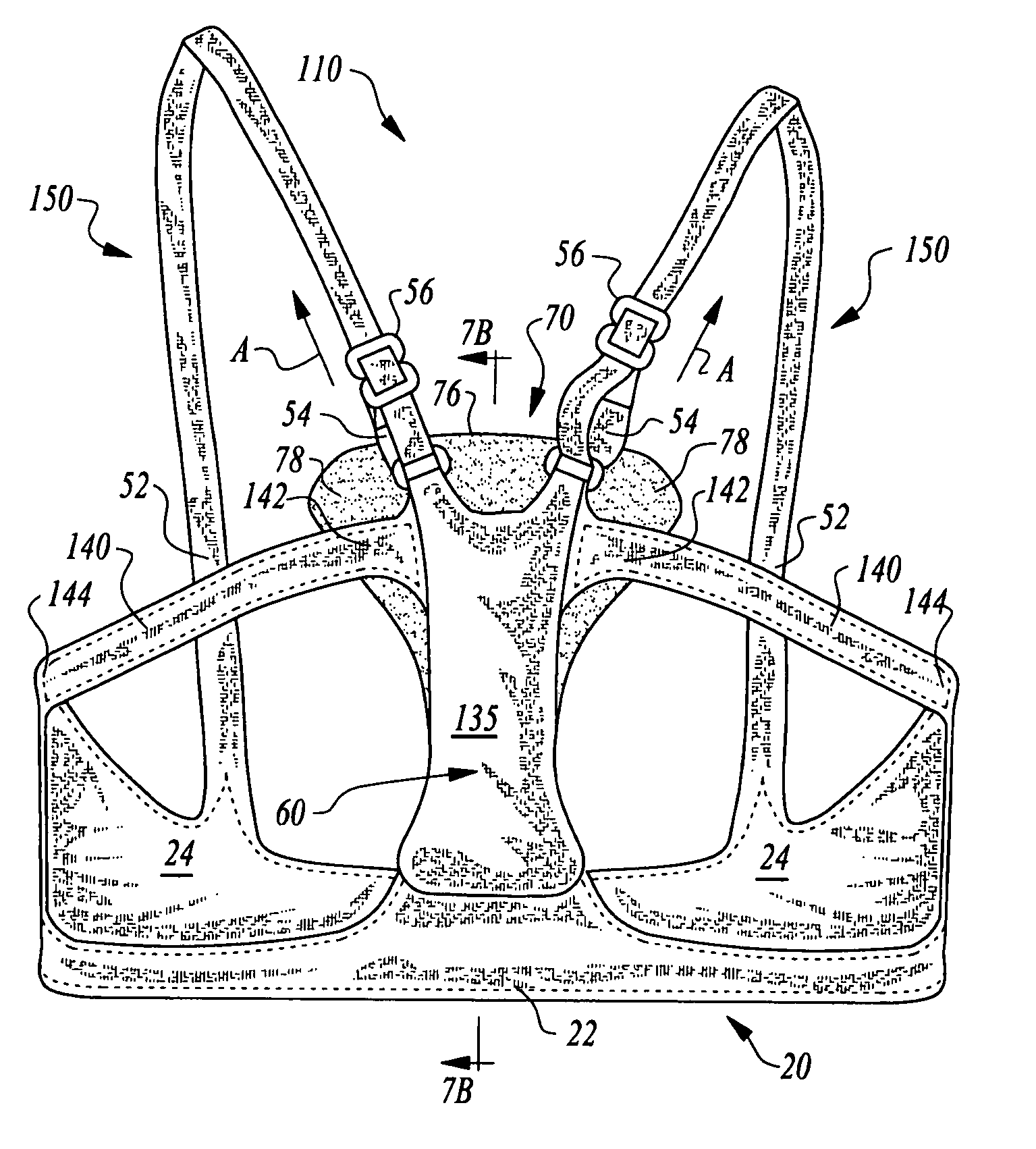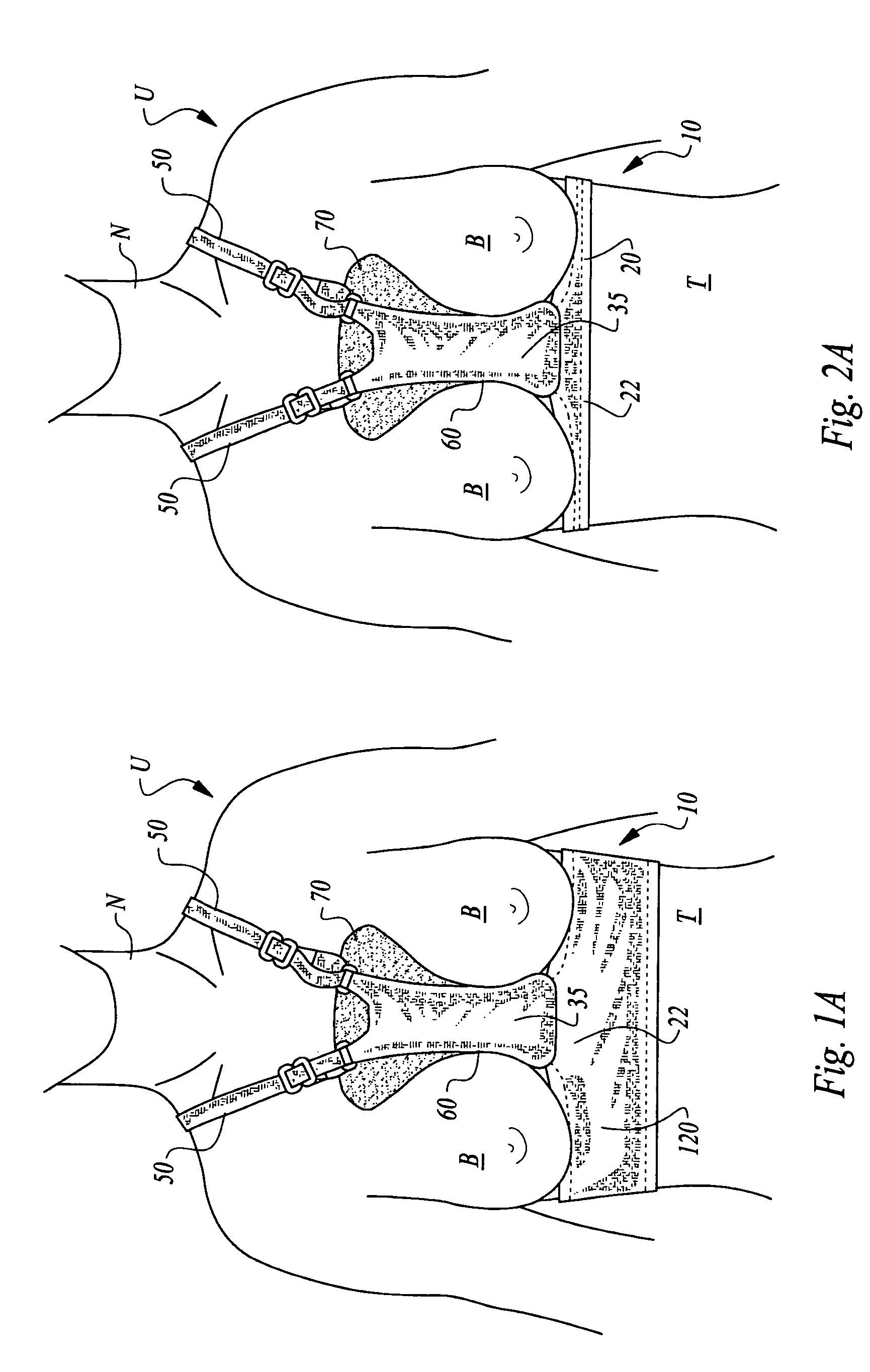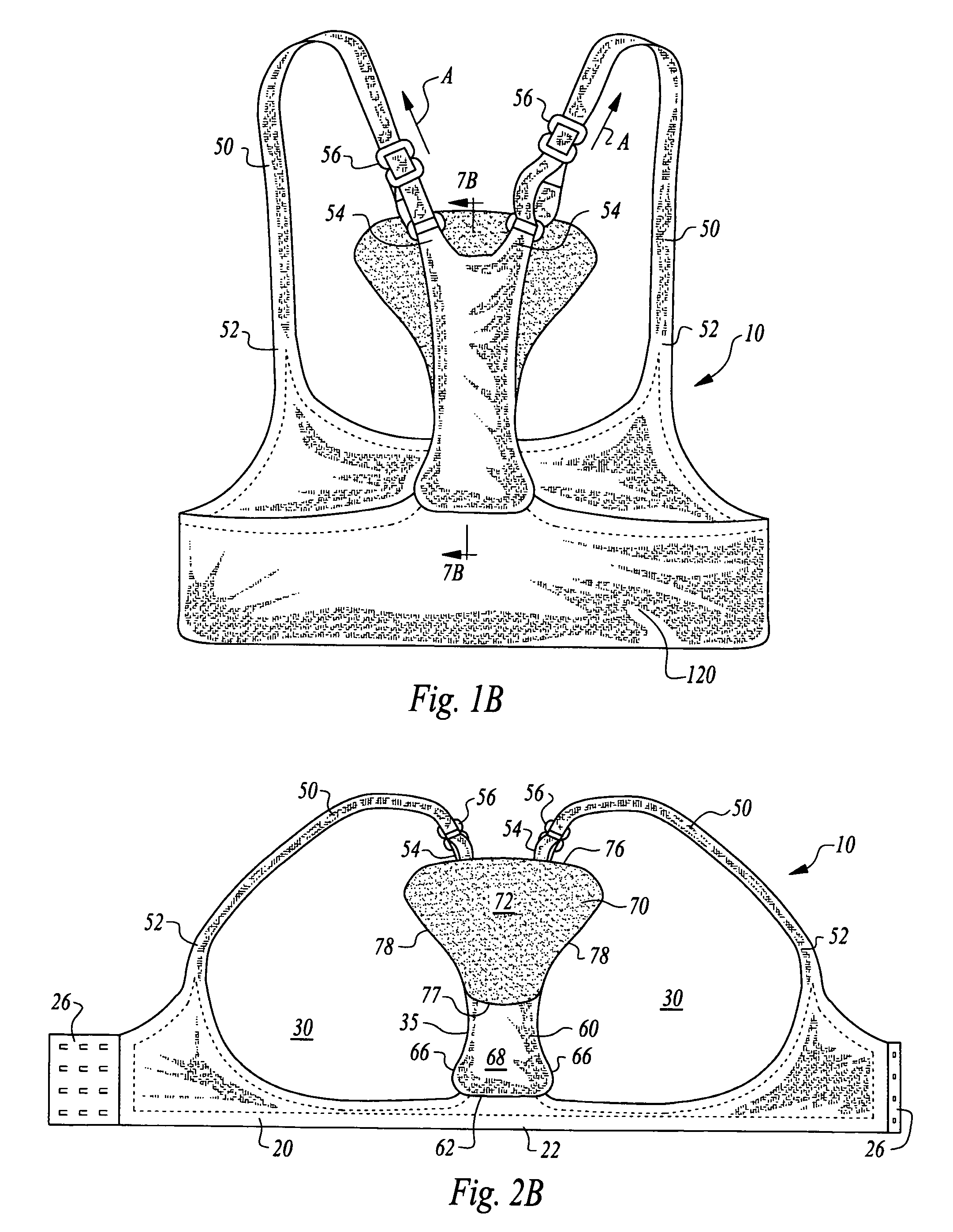Woman's undergarment to remedy chest wrinkles
- Summary
- Abstract
- Description
- Claims
- Application Information
AI Technical Summary
Benefits of technology
Problems solved by technology
Method used
Image
Examples
embodiment 110
[0046]With reference to FIGS. 3A-4B, details of upper bands 140 are described according to an alternative embodiment dual band embodiment 110. The upper bands 140 extend laterally away from the central spacer 60. These upper bands 140 include center ends 142 where they attach to the central spacer 60 and side ends 144 which extend to sides of the undergarment 110, where the upper bands 140 preferably are joined to the lower band 20, 120. In particular, these side ends 144 preferably terminate with connection to the rear panels 24 of the lower band 20, 120.
[0047]The upper bands 140 act along with the lower band 20, 120 to keep the central spacer 60 aligned vertically and against the skin of the wearer U between the breasts B.
[0048]With reference to FIGS. 2B-4B, details of openings 30, 130 for the undergarment 10, 110 are described. Openings 30 are provided on lateral sides of the central spacer 60. The central spacer 60 is sometimes supported on a central panel 35 which acts as a sec...
first embodiment
[0064]The wide lower band 120 undergarment 210 (FIGS. 5A, 5B) can be used with the T-pad 160 as the spacer for keeping the breasts B spaced from each other when the woman U is lying on her side. This T-pad 160 could be utilized with the undergarment 10 of the first embodiment, or could be utilized with the wide lower band 120 of this embodiment. Also, the central spacer 60 and / or central pad 70 could be utilized with the wide lower band 120 of this embodiment.
[0065]The T-pad 160 of FIGS. 5A and 5B is formed of a single material in this embodiment and has a generally cylindrical portion oriented vertically along the central panel 135 to act as a spacer between the breasts B of the wearer U and an upper portion which is wider and is generally designed to press against skin of the wearer U in the cleavage area C between and above the breasts B. Preferably, such a T-pad 160 is removably attachable to the wide band undergarment 110 or other undergarment 10 for separate washing and / or for...
PUM
 Login to View More
Login to View More Abstract
Description
Claims
Application Information
 Login to View More
Login to View More - R&D
- Intellectual Property
- Life Sciences
- Materials
- Tech Scout
- Unparalleled Data Quality
- Higher Quality Content
- 60% Fewer Hallucinations
Browse by: Latest US Patents, China's latest patents, Technical Efficacy Thesaurus, Application Domain, Technology Topic, Popular Technical Reports.
© 2025 PatSnap. All rights reserved.Legal|Privacy policy|Modern Slavery Act Transparency Statement|Sitemap|About US| Contact US: help@patsnap.com



